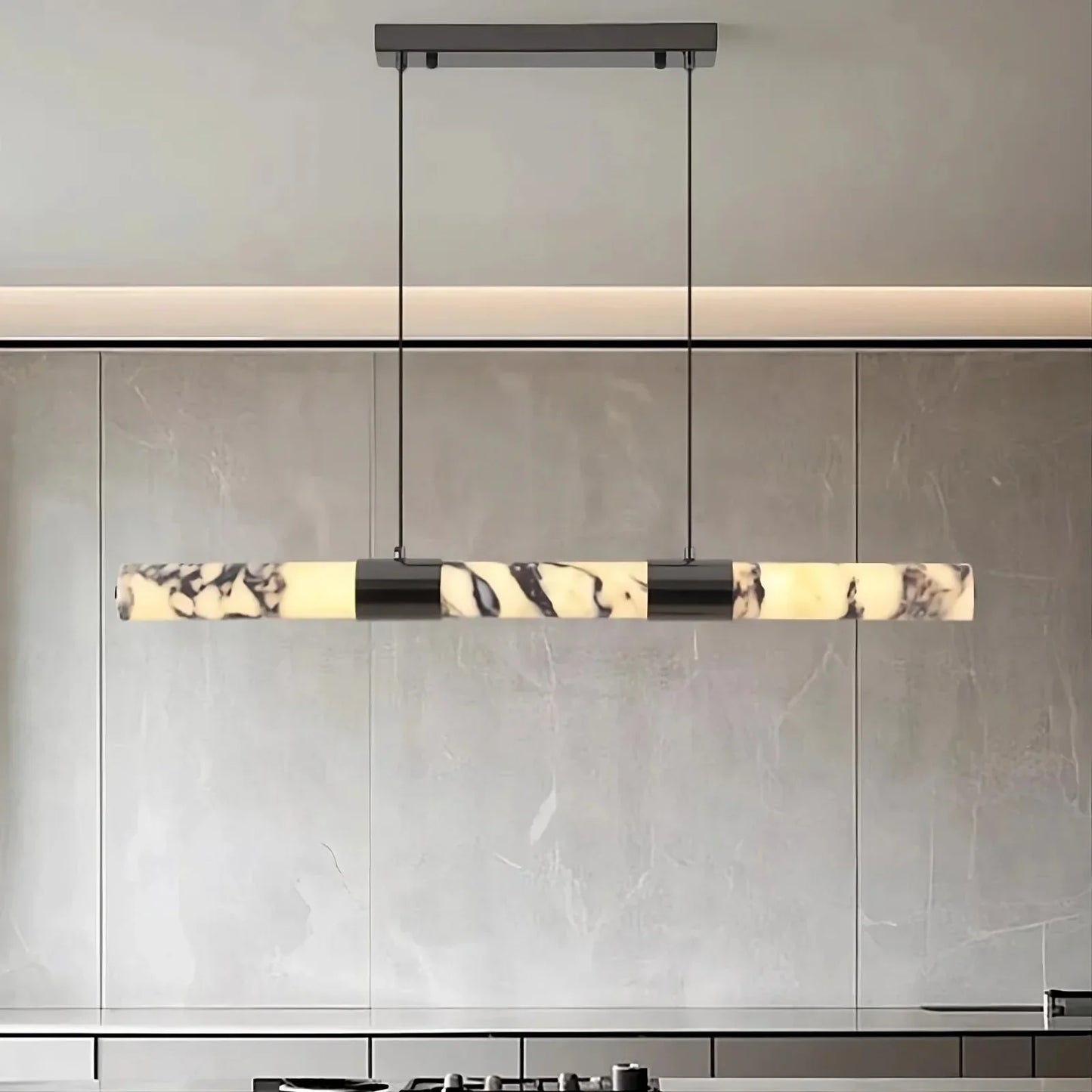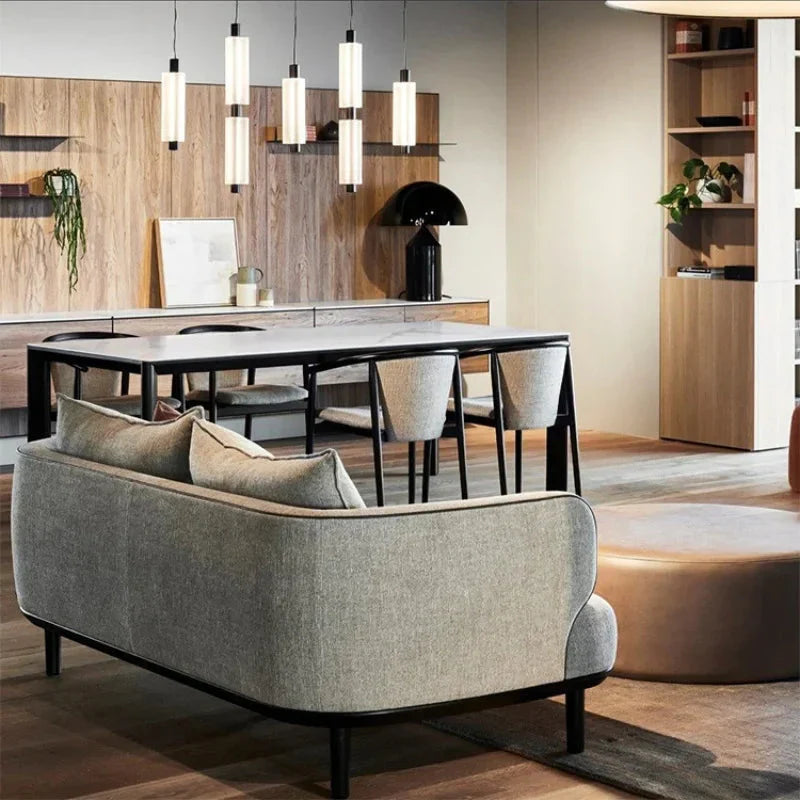
Modern chandeliers are more than just lighting fixtures; they are a statement of elegance, creativity, and functionality. As we enter 2025, the world of luxury lighting is booming with innovative trends, sustainable materials, and versatile designs for every space in your home. Whether you're searching for dining room chandeliers, kitchen ceiling lights, or striking wall sconces, this guide covers everything you need to know.
The Role of Chandeliers in Modern Interior Design
Chandeliers have transcended their traditional role as centerpieces for formal dining rooms. Today, they are versatile and dynamic, adding personality to kitchens, bedrooms, living rooms, and even bathrooms. A modern chandelier combines form and function, often blending bold aesthetics with advanced technology such as dimming capabilities and smart home integration.
Why Invest in Modern Chandeliers?
- Elevates Aesthetic Appeal: Adds a sophisticated touch to any room.
- Improves Lighting Quality: Offers layered lighting when paired with other ceiling light fixtures or wall lights.
- Defines a Space: Serves as a focal point in open-concept living areas or above kitchen islands.
2025 Trends in Modern Chandeliers
1. Bold Finishes: Black and Gold Chandeliers
Black and gold are dominating 2025 trends in luxury lighting. A black chandelier exudes sleek, contemporary elegance, while a gold chandelier adds warmth and luxury to spaces like dining rooms or bedrooms.
2. Sustainable Materials
Chandeliers crafted from recycled glass, bamboo, and natural stone are making waves. These materials complement earthy, minimalist designs while appealing to eco-conscious homeowners.
3. Multi-functional Lighting Fixtures
Chandeliers with integrated features like fans, Bluetooth speakers, or smart technology are gaining traction. These designs ensure your fixture serves more than one purpose.
4. Sculptural and Artistic Forms
Modern chandeliers in 2025 blur the line between art and functionality. Abstract designs and asymmetrical structures are ideal for modern and contemporary spaces.
5. Layered Lighting Combinations
Pairing contemporary pendant lights with elegant wall sconces creates a balanced lighting scheme. This approach enhances both functionality and ambiance.
Choosing the Perfect Chandelier for Your Space
Dining Room Chandeliers
The dining room demands a chandelier that combines elegance with practicality. Opt for:
- Gold chandeliers to complement warm tones.
- Tiered designs for a grandiose feel.
- Adjustable hanging heights for adaptability to table size and ceiling height.
Kitchen Ceiling Lights and Island Fixtures
Kitchens benefit from a mix of pendant lighting and chandeliers:
- Use contemporary pendant lights for kitchens to illuminate countertops.
- Install a kitchen island light fixture to create a practical yet stylish workspace.
- Choose metal or glass finishes for easy maintenance.
Living Room Chandeliers
For living rooms, modern chandeliers should offer a blend of ambient and accent lighting. Popular choices include:
- Crystal chandeliers for a classic touch.
- Sculptural designs for contemporary settings.
- Layered chandeliers with dimmable features for mood lighting.
Bedrooms and Elegant Wall Sconces
Bedrooms require softer, more intimate lighting:
- Elegant wall sconces for bedrooms offer the perfect bedside reading light.
- Opt for smaller chandeliers with warm light tones for a cozy atmosphere.
Materials to Consider in 2025
The material of a chandelier can define its style and durability:
- Metal: Matte black, brushed nickel, and antique gold for modern or industrial styles.
- Glass: Clear or frosted for timeless elegance.
- Crystal: Adds opulence, especially in traditional or transitional designs.
- Wood: A rustic choice that pairs well with farmhouse or boho interiors.
How to Layer Lighting for Maximum Impact
A well-lit space combines multiple light sources. Use these tips to layer lighting effectively:
- Ambient Lighting: Start with a chandelier or central fixture.
- Task Lighting: Add kitchen ceiling lights or pendants for focused illumination.
- Accent Lighting: Use wall sconces or table lamps to highlight architectural features or decor.
Tips for Selecting the Right Size
Choosing the right chandelier size is crucial for a balanced design.
- Dining Rooms: The diameter should be half the width of the table.
- Living Rooms: Ensure the fixture doesn’t overpower the space. A good rule is to add the room's dimensions in feet and convert that to inches.
- Entryways: Hang high enough to clear the door and create an inviting first impression.
FAQs
How do I clean a modern chandelier?
Regular dusting and occasional cleaning with a damp microfiber cloth keep chandeliers sparkling. For intricate designs, a chandelier cleaning spray can be helpful.
Can I use chandeliers in small spaces?
Yes, smaller ceiling light fixtures or compact chandeliers are perfect for bedrooms, entryways, or even bathrooms.
What’s the best height to hang a dining room chandelier?
Hang it 30–36 inches above the table for ceilings 8 feet tall. Add 3 inches for each additional foot of ceiling height.
Do modern chandeliers use LED bulbs?
Most modern designs are compatible with LED bulbs, offering energy efficiency and longevity.
What’s the difference between pendant lighting and chandeliers?
Pendant lighting usually features a single light source, while chandeliers have multiple lights on a central frame.
Are black chandeliers suitable for kitchens?
Yes, black chandeliers work well in industrial or modern kitchen designs, especially above islands or dining nooks.
Conclusion
Modern chandeliers are more than lighting; they are an art form that transforms any space. From kitchen island light fixtures to elegant wall sconces, there’s a chandelier for every style and purpose. The 2025 trends emphasize bold finishes, sustainable materials, and multifunctional designs, ensuring your choice is both stylish and future-proof. Whether you're updating your living room chandelier or adding contemporary pendant lights for your kitchen, investing in the right fixtures will elevate your home’s aesthetic and functionality.




